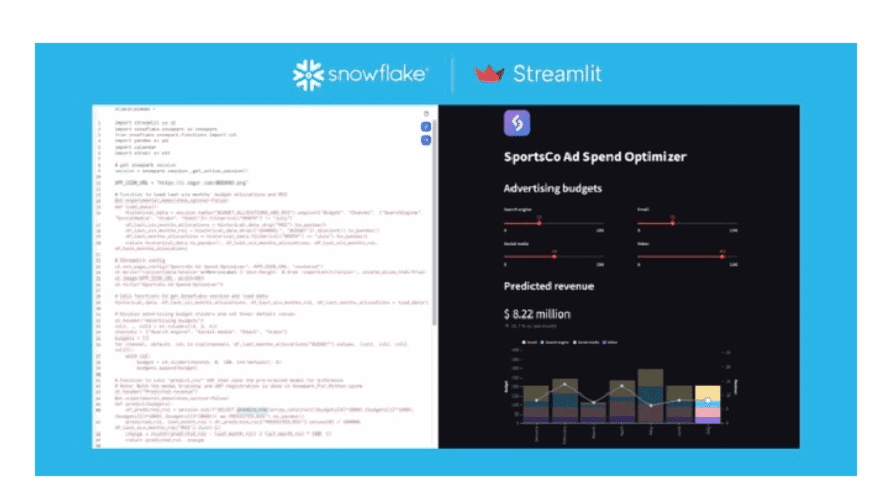Snowflake is expanding the integration of Python in its Data Cloud platform. The organization launched the new Snowflake for Python tool and tightened the integration of Streamlit, a recently-acquired company.
The new Snowflake for Python tool supports programming languages commonly used by data scientists, including Java, Scala and SQL. The tool allows Python to be integrated directly into the Snowflake development framework.
The latter helps developers to create Python APIs that process data on the Snowflake Data Cloud platform without moving data to the API’s platform. In the past five months, Snowflake for Python has been tested by hundreds of end users.
Streamlit and Snowflake
Snowflake also announced that it’s tightening the integration of Streamlit, a company acquired in March. The integration of the technology, also available in a public preview, helps developers build data analytics and machine learning models in Python on top of the Snowflake platform.
The latter helps developers use the platform’s security and governance features. In addition, Streamlit technology simplifies the sharing of applications developed on the Snowflake platform. The tool generates a shareable URL with a single click.

Python enhancements
In addition, Snowflake is making a number of changes for Python enthusiasts. Snowflake-optimized data platforms will be available in public clouds, starting with AWS. These platforms allow Python developers to run large ML training models and other memory-intensive workloads directly in Snowflake.
Furthermore, a private preview of Python Worksheets will be available for application, data pipelines and ML model development in the Snowflake Data Cloud. Support for Python distro Anaconda will be continued. Soon, Snowflake users will be able to access Anaconda’s open-source Python libraries without manual installation.
General updates
General updates to the Snowflake platform include improved development capabilities for data pipelines, as well as the introduction of native dynamic tables and transparent data pipeline failover for data pipeline development.
Furthermore, the platform gained several observability and development features in the areas of alerts, logging, task graphs and historical insights. All of these features are now accessible in either public or private preview.
Finally, new functionality was added to speed up search queries on the platform. The integrated search engine has been improved for this purpose.
Tip: Snowflake CEO Slootman talks about industry focus and growth
